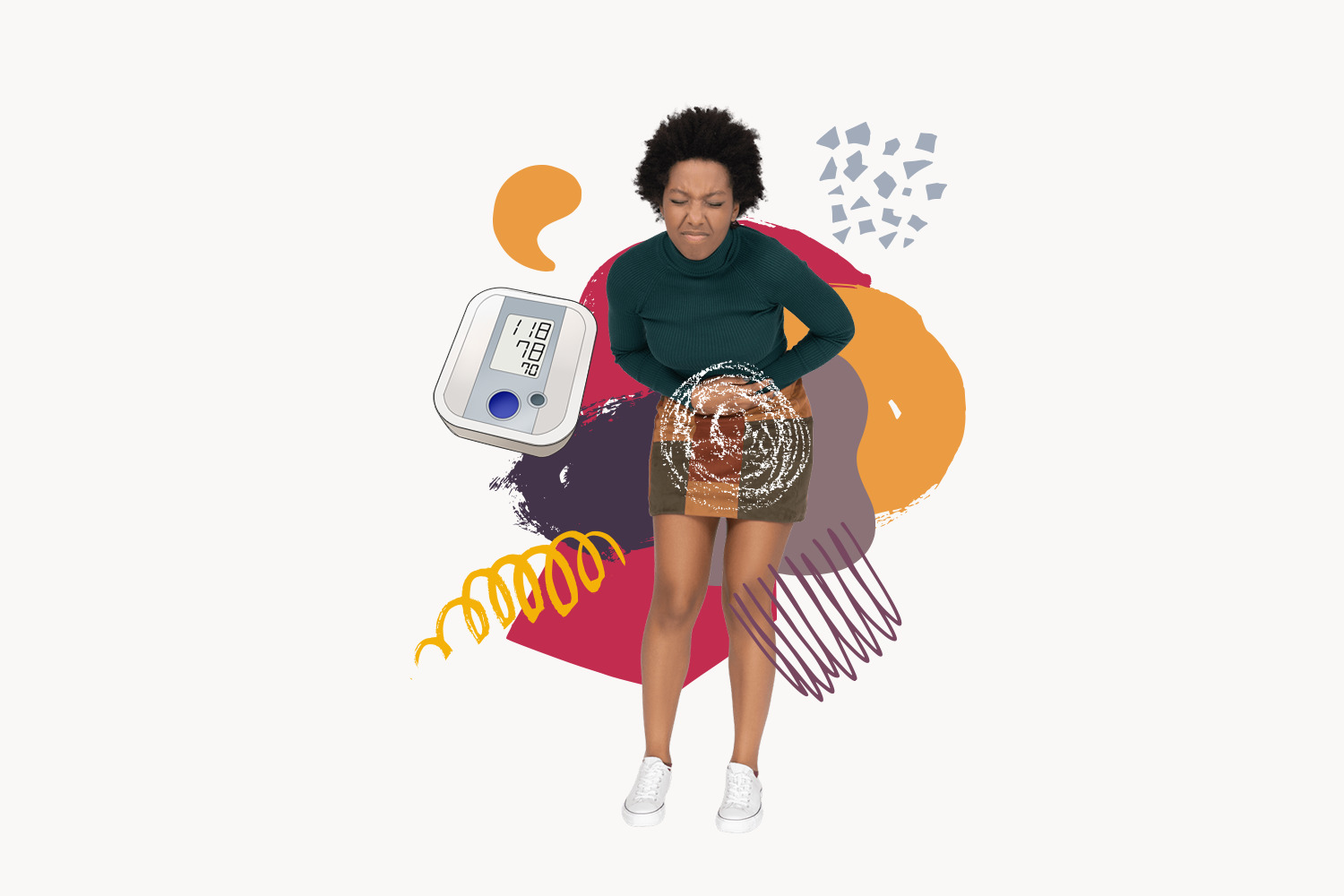What is Preeclampsia? Symptoms, Risks, and Treatments
Pregnancy is a time of changes for your body. Most of these changes are normal, but some changes are signs of bigger issues. One of the most common pregnancy complications is preeclampsia. Occurring in about 1 and 20 pregnancies it can become very serious if left untreated.

What is preeclampsia?
Preeclampsia is a complication of pregnancy that results in high blood pressure and possible damage to organs. This organ damage can result in protein in your urine and low platelets in your blood.
Complications of the condition can be very serious including:
- bleeding problems during delivery
- placental abruption
- damage to the liver and kidneys
- pulmonary edema
- HELLP syndrome which is hemolysis (the destruction of red blood cells), elevated liver enzymes, and low platelet count
The condition can also progress into eclampsia leading to seizures, stroke, cardiac arrest, and the risk of death for mother and baby.
Women suffering from preeclampsia are at a higher risk of premature labor and the need for emergency cesarean delivery. Catching symptoms early and following your healthcare provider’s recommendations can reduce the risk of preeclampsia developing into a more serious condition.
Symptoms of preeclampsia
Regular visits to your doctor for prenatal care can help catch preeclampsia early. Some symptoms can be confused for normal pregnancy changes so it is important to know what the warning signs are:
- Quick weight gain over a few days due to fluid retention
- Belly pain, especially in the upper right side
- Dizziness
- Severe nausea or vomiting
- Vision changes like flashing lights, blurry vision, or floaters
- Severe headaches
- Reduced urination
Most women begin to experience signs of preeclampsia after 34 weeks of pregnancy. Typically symptoms disappear after giving birth. Some women experience preeclampsia as early as 20 weeks or even have them start right after delivery.
Other women don’t experience any of these symptoms. That is why it is important to have regular blood pressure checks and urine tests done as part of normal prenatal check-ups.
If your doctor gets an abnormal blood pressure reading they may closely monitor your numbers. If a second abnormal reading (higher than 140/90 mm Hg) is confirmed four hours after the first one, further testing might be recommended.
To diagnose preeclampsia your doctor will monitor your blood pressure and run a urine analysis to measure protein in the urine. Blood tests to test kidney and liver function as well as measure platelets will be ordered.
Other tests may be ordered including fetal ultrasounds to monitor your baby’s growth. Or a nonstress test to check how your baby’s heart reacts when they move. All of these tests may be performed multiple times throughout your pregnancy to monitor your condition and the baby’s development.
Causes of preeclampsia
The causes of preeclampsia are still being studied, but most experts believe it has to do with the blood vessels that develop in the placenta in early pregnancy. The biggest factor seems to be genetics, but there are other risk factors for developing preeclampsia.
These include:
- First pregnancy. The risk of preeclampsia is greatest in your first pregnancy.
- Existing hypertension. If you suffer from hypertension pre-pregnancy, you are at greater risk for preeclampsia during pregnancy.
- Women on either end of the age spectrum (very young or older than 35) are more likely to experience this during pregnancy.
- Black women have been shown to have preeclampsia at a higher rate than other races.
- If you are overweight before pregnancy you are at higher risk for preeclampsia and other pregnancy related conditions.
- Multiple pregnancy. If you are carrying twins, triplets, or more babies you have an increased chance of developing this condition.
- Existing conditions. Certain pre-existing conditions such as high blood pressure, migraines, diabetes, lupus, and blood clotting conditions, increase your risk.
- In vitro fertilization. Conceiving via in vitro fertilization has been shown to correlate to an increased risk of preeclampsia.
Treatment of preeclampsia
Preeclampsia needs to be taken seriously and treated right away. If left untreated it can lead to a more serious condition – eclampsia – that puts both mom and baby at risk. There is no cure for preeclampsia except to give birth.
Even though there isn’t a cure there are several options to ease the symptoms. Prolonging the pregnancy will ensure the baby has enough time to fully develop in utero. If you have suffered from preeclampsia in previous pregnancies you might be started on medications such as:
- Antihypertensives to lower blood pressure.
- Anticonvulsants to prevent seizures.
- Corticosteriods to improve platelet and liver function and prolong pregnancy.
Besides medications, rest of some sort is often prescribed. If you have mild symptoms you may be told to rest at home with very limited physical activity. Some women may be advised to just lie in bed and only sit or stand when absolutely needed. In serious cases, a woman may be admitted to the hospital for controlled rest and continuous monitoring.
Lifestyle changes can help moderate factors contributing to high blood pressure and contribute to an overall healthy pregnancy as well. These changes include:
- Staying hydrated
- Avoiding fried or processed food
- Limiting salt intake and avoiding added salt
- Getting regular exercise with your doctor’s approval
- Elevating your feet a few times a day
The final treatment is to induce labor. This is usually done only once the baby is developed enough to survive outside the womb or it is absolutely necessary to save the mother’s life.
Depending on how far into your pregnancy you are will help you and your doctor decide what is the appropriate treatment. If it is too early to deliver the baby rest, lifestyle changes, and medication may be the best course. If preeclampsia develops later in your pregnancy and the baby is developed enough to safely be delivered your doctor may recommend inducing labor.
In some rare cases preeclampsia actually develops after the baby is born in what is known as postpartum preeclampsia. This is still a serious condition that requires prompt treatment.
Women with preeclampsia will most likely have all symptoms dissipate within a few weeks after delivery. However, there are possible long term effects that your doctor will continue to monitor for. Some studies have shown that women who suffered from preeclampsia have twice the risk of developing cardiovascular complications 5 – 15 years after delivery.
Diagnosis with preeclampsia can seem scary when you are already dealing with all of the other changes related to pregnancy. Remember you are not alone and with the help of your healthcare team you can make it through this part of the fertility journey. Follow recommendations for a healthy pregnancy, get plenty of rest, and stay vigilant about your prenatal care.
Mira’s Editorial Process
All content produced by Mira meets stringent editorial standards, ensuring excellence and accuracy in language and medical precision. Every piece undergoes thorough fact-checking and review by qualified professionals. Check out our full editorial process to learn more.










